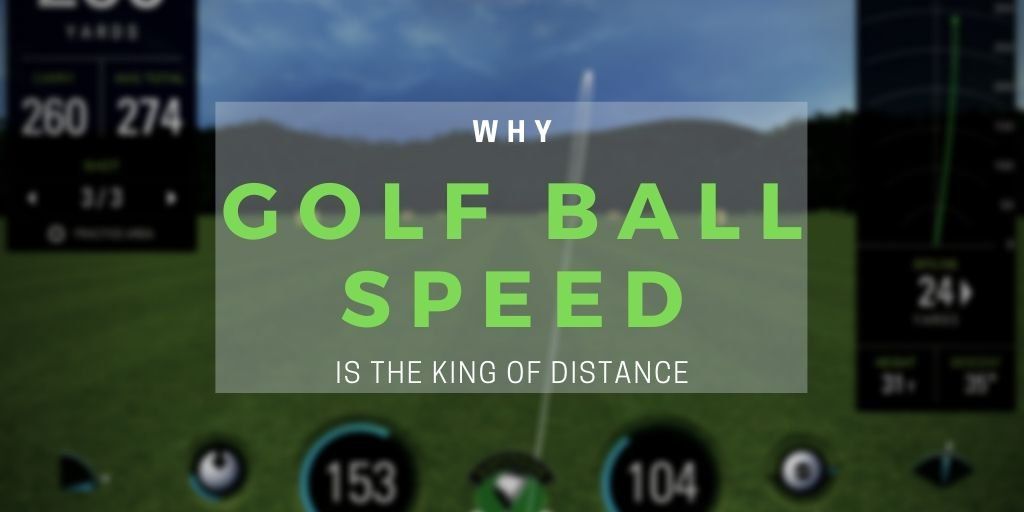
Most golfers want to know how to add distance to their game, and they should. Hitting it farther gives you a better opportunity to post lower scores. How can you do it? In my opinion, having a laser-sharp focus on increasing your golf ball speed is the way to get it done.
In this article, I'll explore why ball speed is so important when it comes to distance, and provide reasonable steps you can take to improve your ball speed.
What Is Golf Ball Speed and Why Is It So Important?
The simple definition of ball speed is how fast the golf ball is traveling when it comes off the face of your club. If you're a fan of professional golf, you've likely seen golf ball speed numbers popping up on TV now. Some of the longest hitters on tour are somewhere in the 170 mph - 190 mph ball speed range (which requires a minimum swing speed of about 115mph). As you can see from this infographic from DECADE Golf, it's also directly correlated to making money as a pro golfer:
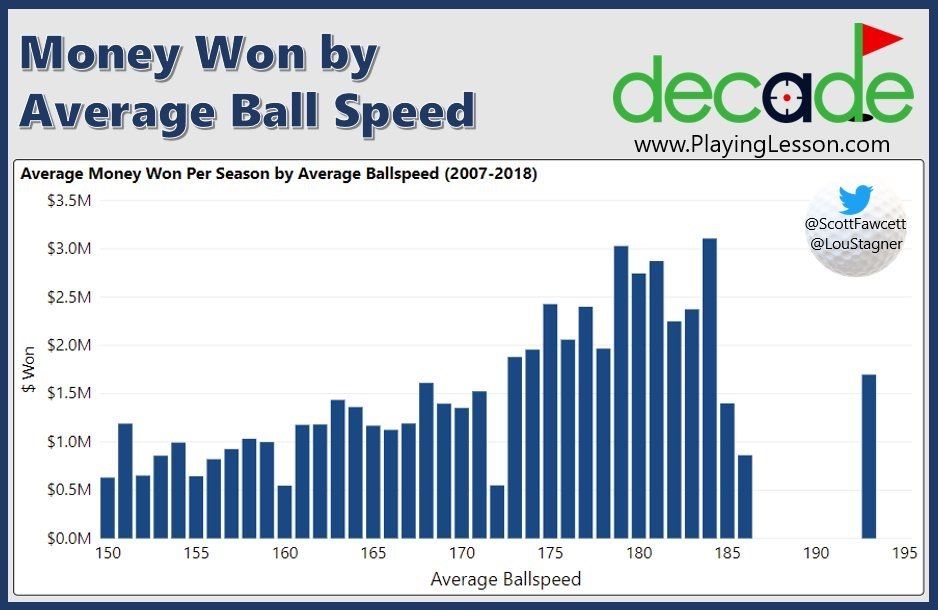
What are typical golf ball speed numbers for recreational players? Trackman reported the following averages for male golfers with their driver:
- Scratch or Better – 161 mph
- 5 HCP – 147 mph
- 10 HCP – 138 mph
- Average Golfer (14.5) – 133 mph
- Bogey Golfer – 131 mph
When golfers talk about increasing their distance (particularly with their driver), they usually focus on clubhead speed. In my opinion, focusing on ball speed is more important. While your swing speed is very critical - golf ball speed is a better measurement of how efficiently you transferred the energy of your swing to the ball.
For example, if you had a golfer with a driver swing speed of 100 mph, but with very efficient impact conditions, they could hit the ball farther than someone who swung inefficiently at 110 mph.
Long story short, when it comes to distance, golf ball speed is the king. An increase of 1 mph in ball speed can lead to roughly 2 yards of increase in distance with your driver. A lot of times, those gains can come without adding any speed to your golf swing.
How Does Ball Speed Change By Impact Location?
Modern golf clubs have done an excellent job of providing forgiveness on off-center strikes. However, no matter how good the technology is, there is still a penalty for missing the sweet spot (center of gravity). I'll show you a couple of examples from my own clubs to illustrate how strike location can alter your ball speed (and a few other important parameters for distance).
Since driver distance is what everyone is most interested in, let's start there. Using my SkyTrak launch monitor, I hit a bunch of shots and kept track of where I was making an impact using foot odor spray.
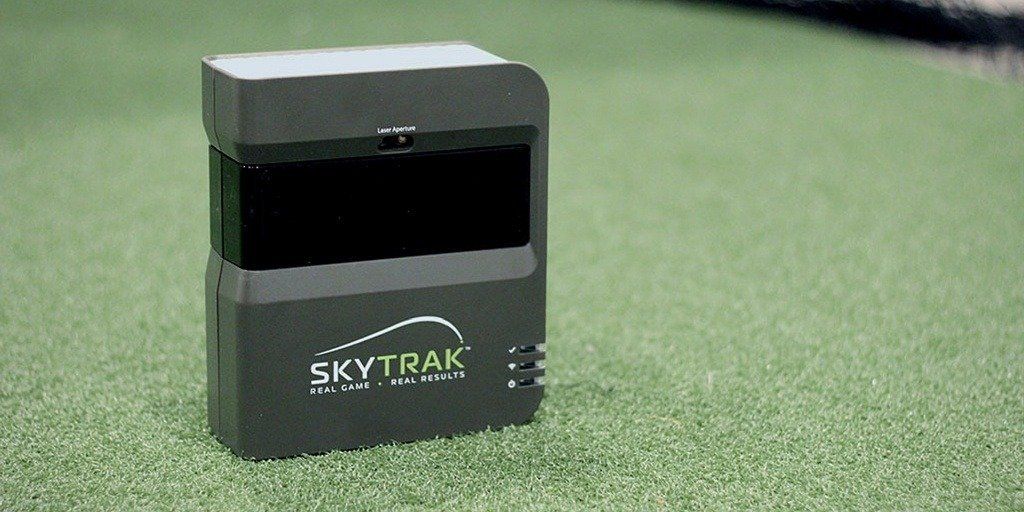
I'm mostly paying attention to ball speed and how it relates to distance, but taking note of spin rates and launch angle, which are two other data points that largely determine how far your ball is going to travel.
Here is a perfectly struck driver shot:
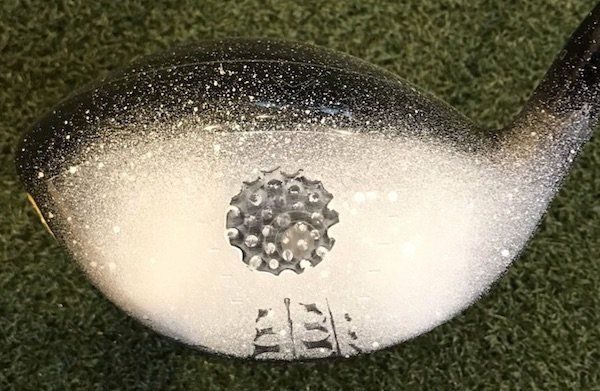
This shot had 153 mph of ball speed, carried 260 yards for a total distance of 286 yards.
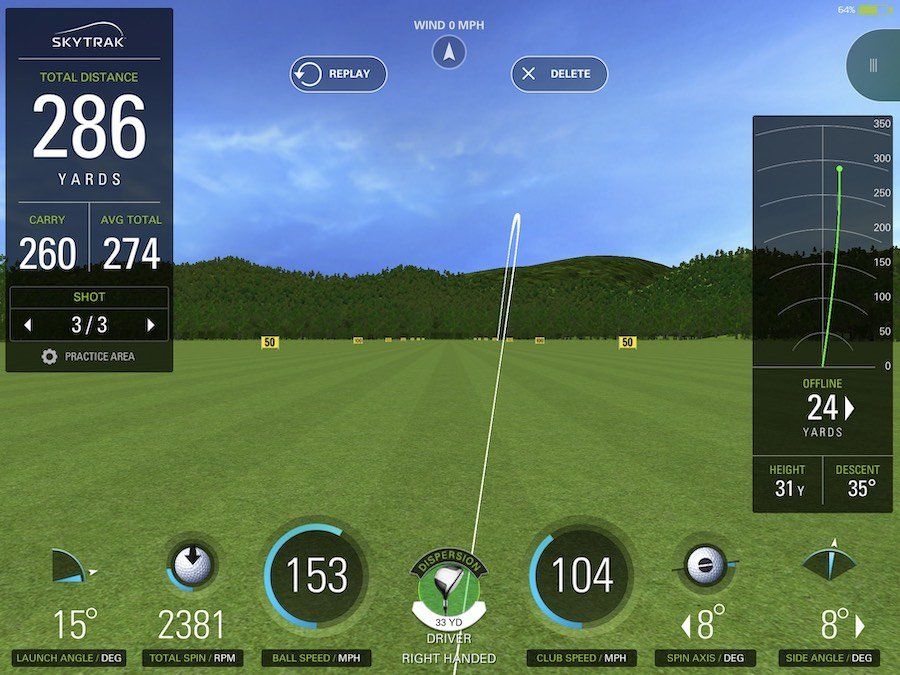
Looking at the launch angle and spin rate, that's about as efficiently as I can drive it. According to SkyTrak's Shot Optimizer, it's within optimal ranges on each category:
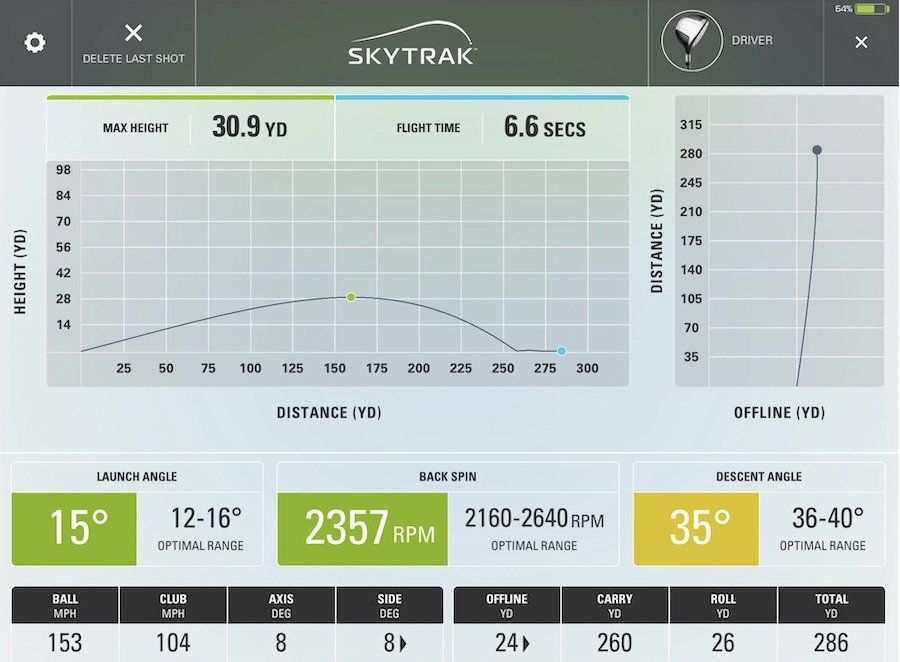
When you strike it well, the golf club can do what it's designed to do. You'll get maximum ball speed, and other ball flight parameters will benefit as well (launch angle, spin rate, etc.). The end result, a golf shot you can be proud of.
Now let's take a look at what happens when I miss a little bit:
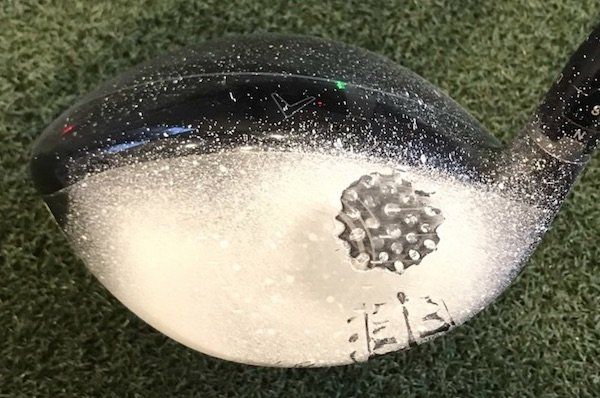
Striking it high on the face towards the heel results in a ball speed of only 142 mph (a drop of 11 mph) and a total distance of 255 yards (a decrease of 31 yards).
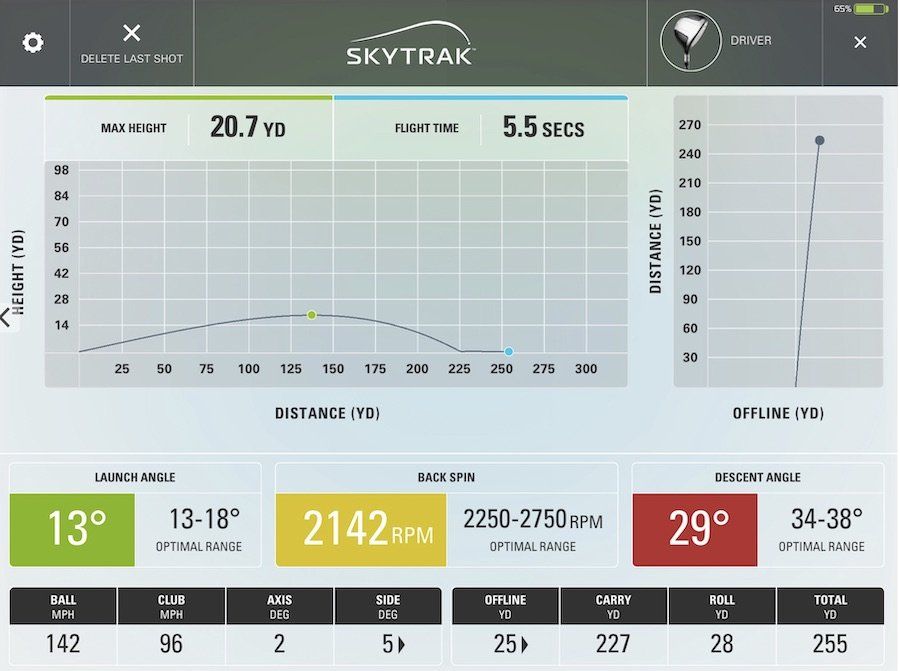
Looking at the shot optimizer, you can see that my spin dropped a little bit, but the biggest culprit for the distance drop is the lack of height. If you are a low spin player like I am, you need ball speed to keep the ball in the air. When I lose 11 mph of speed coming off the driver's face, the ball struggles to climb in the air as much (think of it like a rocket running out of fuel), and the total distance is affected quite a bit.
When I strike the bottom of the face with my driver, things look even worse. I've lost as much as 50 yards of distance because the ball launches so low with very little ball speed.
Now let's take a look at my 7-iron...
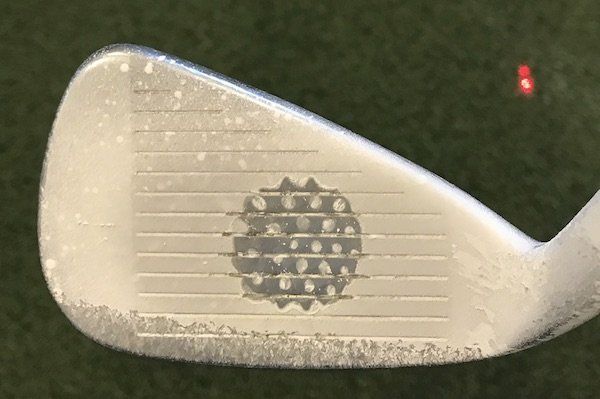
This shot was struck a little higher on the face, on what I would call the "hot spot" of my 7-iron. It launched a little higher with less spin and plenty of ball speed. It registered at 122mph and carried 185 yards, which is about 10 yards longer than I usually hit this club.
Typically, when I miss my irons, it will be on the heel like this shot:
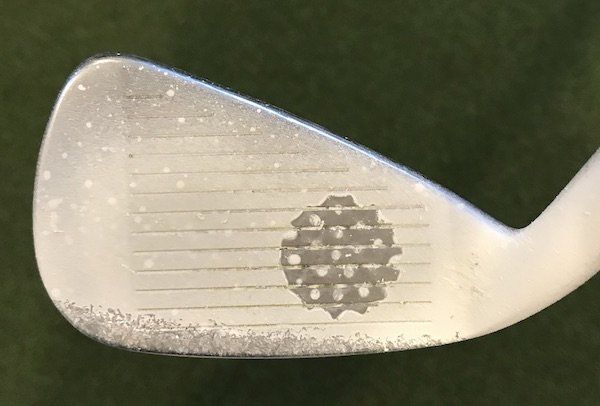
My ball speed dropped to 115 mph (7 mph less) and carried 167 yards (18 yards less).
While there are endless variables based on strike location and the kind of golf clubs you are using, off-center strikes result in lower ball speed and a lack of distance. While that should come as no surprise to you, many golfers don't know how much they are losing because they likely don't know their impact tendencies and haven't experimented with a launch monitor (yes, I've turned into quite the golf geek with my lab at home).
If you love data, check out this great chart from Ping Golf. If it doesn't make your head spin, you can see how ball speed can correlate with other factors to create optimal driving distances:
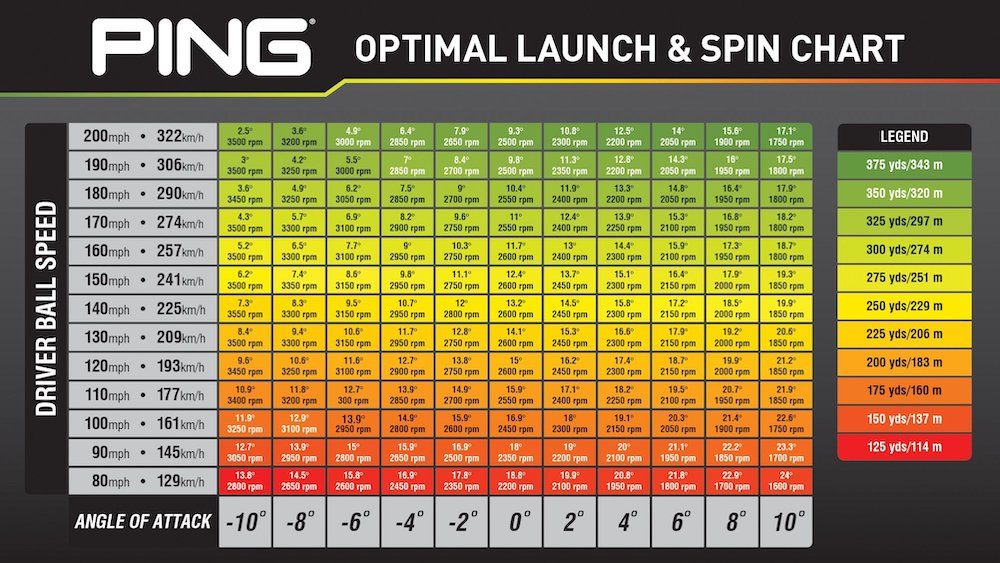
How to Measure Golf Ball Speed
If you're interested in tracking your golf ball speed, luckily the costs have come down significantly. There are a lot of launch monitors in the $500 and under category (if you don't want to shell out $2000 for SkyTrak) that can measure ball speed accurately.
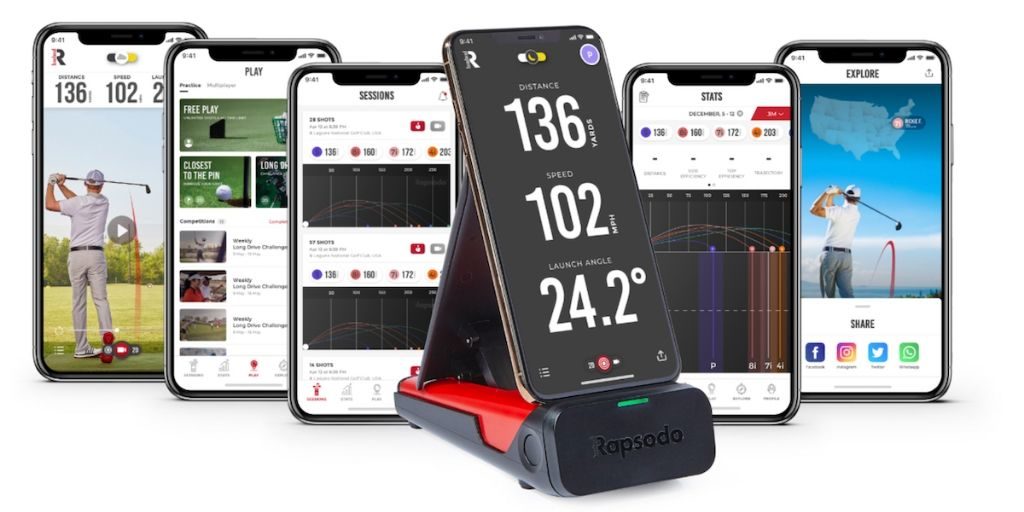
There are several I've tested and recommend:
PRGR (review)
Rapsodo MLM (review)
Swing Caddie SC200 (review)
Swing Caddie SC300 (review)
How You Can Increase Your Golf Ball Speed
There are two ways I believe most of you can increase your ball speed (and distance):
- Improve your impact tendencies
- Train your body to move faster
I think all golfers should be working on their impact tendencies when they practice, and I've spoken about this many times before. It's not difficult to add this kind of focus to your existing practice routine. In my opinion, it's the path of least resistance when it comes to adding ball speed.
The second option requires more effort outside of just hitting balls. All things being equal, if you do increase your clubhead speed through training, you will see a jump in ball speed. I'd caution you to do it the right way, though. Merely trying to swing harder will likely result in a breakdown of your technique, which will cause your impact location to suffer, and your ball speed to drop.
Impact Location Training
Luckily working on your strike location is not terribly complicated. Get yourself a can of foot odor spray, and when you practice, start taking note of your tendencies.
There are two main reasons I like practicing with impact location intent:
- It gives your practice session more meaning and structure.
- When you focus on impact, it allows your swing to self organize a fix that doesn't require you thinking about all of the moving parts it took to get there.
While I never tell all golfers that it can fix everyone, a lot of players are amazed at how much progress they can make once they figure out their impact tendencies and consciously try to start striking different parts of the face.
If you're noticing a bias towards one side of the face, I like using a "fight fire with fire" approach. For example, when I am struggling with heel strikes, I merely try to exaggerate a miss on the outside of the toe. Sometimes I'll even set up with the ball on that side of the face. Interestingly enough, when I try to strike the toe, it moves my impact from the heel to the center of the face.
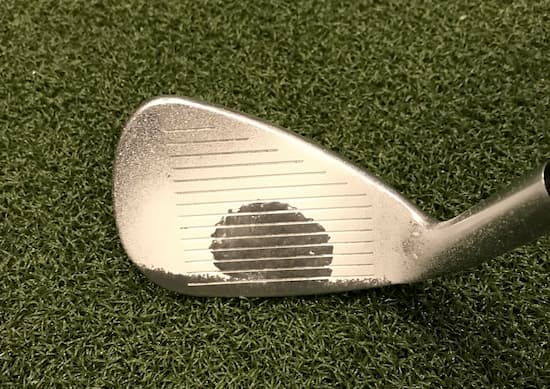
You can also experiment with small changes in your setup to see how it changes your strike location - like standing closer, or further away from the ball.
Another experiment I love to do is altering tee height. Start adjusting your tee in low, medium, and high positions and see how it changes your impact location on the driver's face (or other clubs you use off the tee). Your goal is to try and reduce strike towards the bottom of the clubface, and get them more towards the center, or just above it.
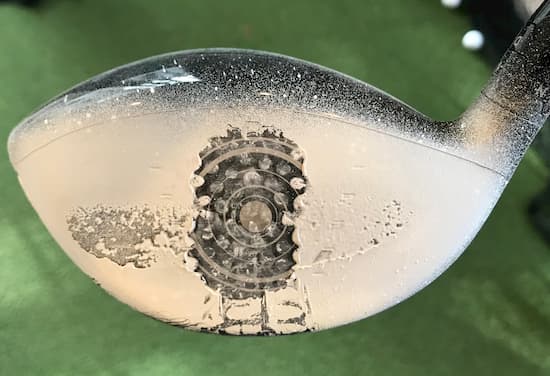
Using physical barriers like tees can help improve your impact location. A good drill is to set two tees slightly wider than the width of your club - try clearing the gates with your practice swings and then while trying to hit a ball. Or you can experiment with a tee on one side of the ball as well, depending on where your misses are.
Lastly, you can challenge yourself to strike different parts of the clubface on purpose. Consciously try to hit the heel, center, and the toe of the club separately. If you're looking for real bonus points, you can try Andrew Rice's drill where you separate the driver's face into four quadrants and try to strike each one separately.
Training Your Body to Move Faster
If you're into physical fitness, there are a couple of ways to increase your clubhead speed without sacrificing your technique, which will, in turn, help you gain more golf ball speed.
I believe the most foolproof method is to train several times a week, focusing on strength, mobility, and power. There are plenty of golf-specific programs out there that can help. One recommendation would be to find a TPI certified trainer. Also, this article, written by Mike Carroll from Fit For Golf, goes over his top nine golf exercises.
Additionally, Overspeed training has become a prevalent method of increasing clubhead speed. SuperSpeed Golf has become the gold standard for speed training in the golf industry. This can be done by itself or in conjunction with a workout routine.
Wrapping It Up
If you want to hit golf shots that go as far as possible, increasing your ball speed is the most critical metric to keep track of. Think of it as a measure of efficiency. My number one recommendation is to work on improving your impact location, which is an easy (and useful) addition to your practice sessions. On top of that, increasing your swing speed through physical training is another way to get it done. Combine the two, and you'll be blowing your drives by your buddies very soon!
Here are some other articles I've done using my SkyTrak that I think you'll find interesting:
How Do Adjustable Drivers Affect Ball Flight?
Driver Dispersion: Choosing Optimal Targets Off the Tee
You Don’t Have As Much Control Over the Ball As You Think
We care about the protection of your data Read our Privacy Policy